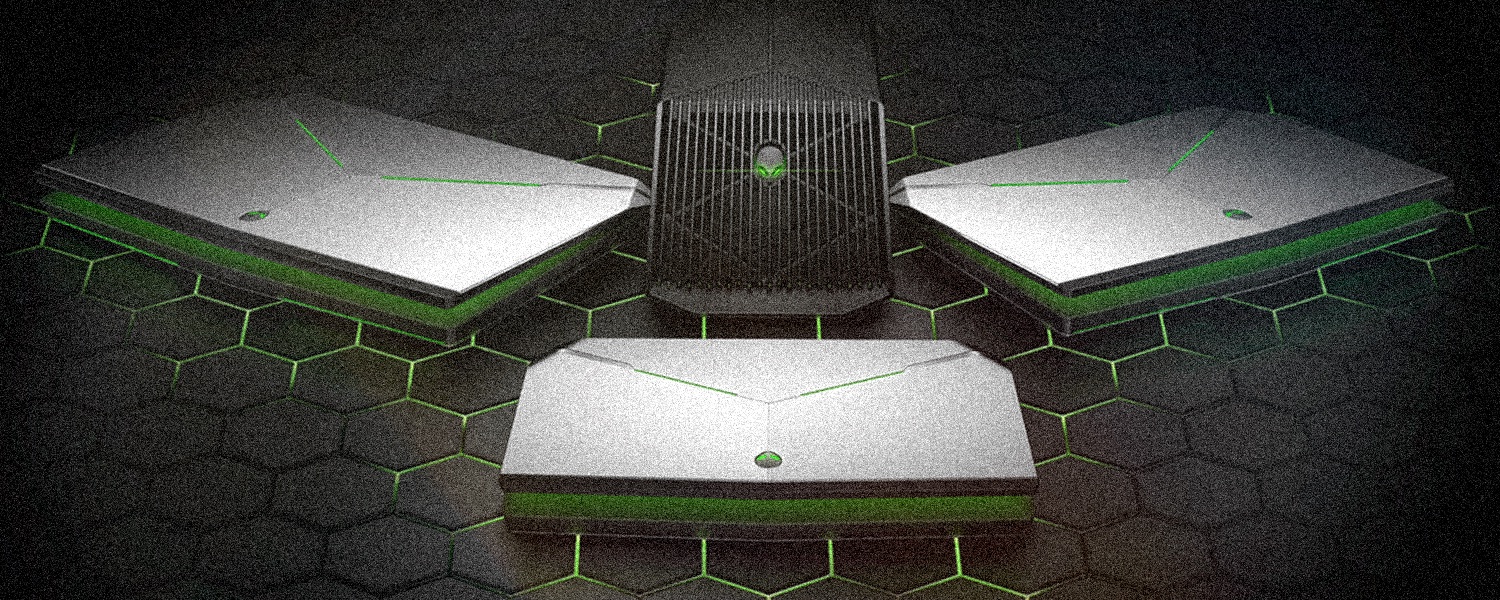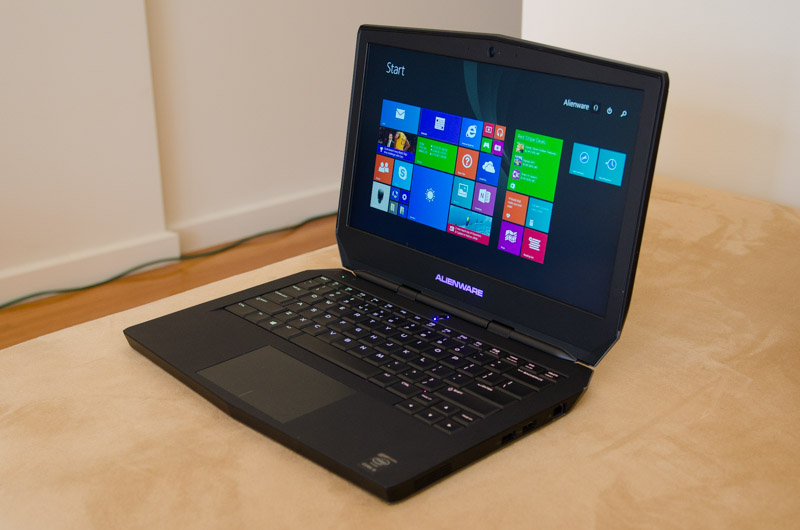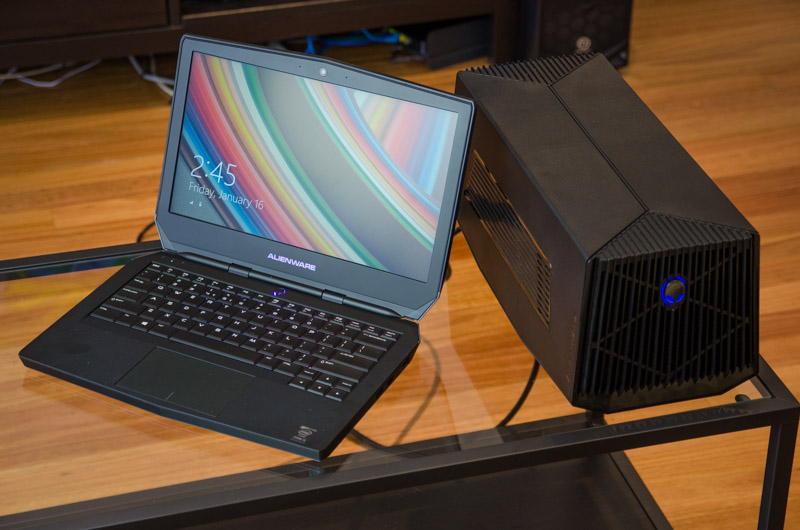Ultimate Gaming Machine?
The easiest way to describe my thoughts on the Alienware 13 and Graphics Amplifier combination is that it's one step away from greatness.
I liked gaming on the Alienware 13. The 1080p display included with my review model was bright and responsive, even though color quality leaves a little to be desired. The keyboard was excellent for gaming, and I always enjoy messing around with the AlienFX lighting integrated around the system. Port selection also appears fine for a typical laptop gamer.
The decidedly average size and weight of the Alienware 13 as far as gaming notebooks go leaves a little to be desired. Some gamers will appreciate things like the sci-fi styling, soft-touch keyboard surround, powerful speakers and adequate cooling, though I can't help but wish a few millimetres and a few hundred grams were shaved off the size of this machine.
The Graphics Amplifier is an excellent way to supplement the power of the Alienware 13, transforming the system into a gaming beast when you're sitting at your desk. With a GTX 780 inside, I had no trouble playing games on max settings at 1080p, something not possible with the GPU found in the laptop itself. It also provides a way to upgrade your gaming setup, bridging the gap between laptop and desktop.
It's not without limitations, though. The box is quite large and I wonder why it wasted so much space on the inside. The price is also a limiting factor: $300 for a GPU-less Amplifier is too much, as you'll have to spend at least $250 on a GPU to improve performance, and that's already on top of the Alienware 13's standalone price of $999+.
If Alienware could slash the Amplifier's price in half it'd be a very compelling purchase. $450-500 extra for a laptop enhanced by a high-end GTX 970 or R9 290 would be well worth it in my opinion, especially as that would double your gaming performance.
The hardware configurations offered by the Alienware 13 and also the pricing structure indicates that this product is designed to be a mid-range gaming laptop. And that's not necessarily a bad thing for gamers, because it occupies a slot in the market that other laptops don't really target. For more money (typically $2,000+) you could cram better hardware into a 13-inch chassis, which is what Gigabyte has done with their Aorus X3. For less money you move into Ultrabook and mainstream territory, typically with no dedicated graphics for gaming.
However, the Alienware 13 takes an odd middle-ground between performance and portability that I'm not completely satisfied with. The machine is certainly more portable than larger 15-inch and 17-inch gaming laptops - which occupy the high-end product categories at Alienware and many other brands - but considering the size it still is, I wished it was slightly more powerful or slightly slimmer.
I feel a future update to the Alienware 13 could really position it as the portable, thin, mid-range gaming laptop that you can carry around with you day-to-day. While the performance of the laptop itself wouldn't be a standout (just like the current edition of the Alienware 13), it could be supplemented well by the Graphics Amplifier when you arrive back to your desk.
So at the moment the Alienware 13 is one step away from being a truly compelling product. It's a good laptop, packing decent enough hardware for the price into a portable shell with a great keyboard. The Graphics Amplifier is a very promising idea that greatly enhances the package, but again a few tweaks wouldn't go astray, especially where the design and price are concerned.
score
Pros: A portable gaming laptop with enough power to play most current games. Great keyboard and cool lighting effects. Graphics Amplifier can transform this mid-range performer into a gaming beast.
Cons: Graphics Amplifier is too expensive without a GPU. Alienware 13 is chunky considering the internal hardware. Wasted space in the Amplifier.



